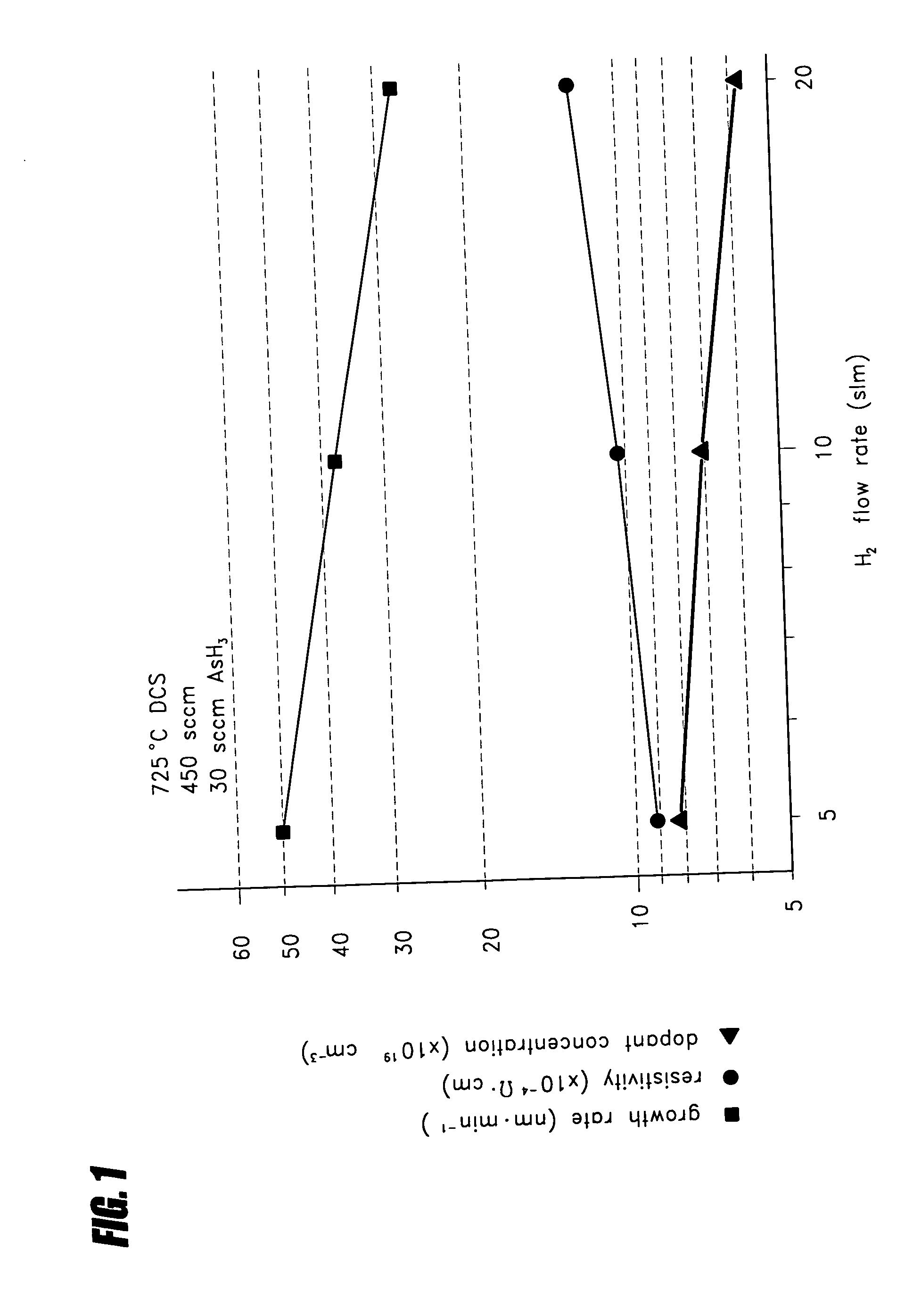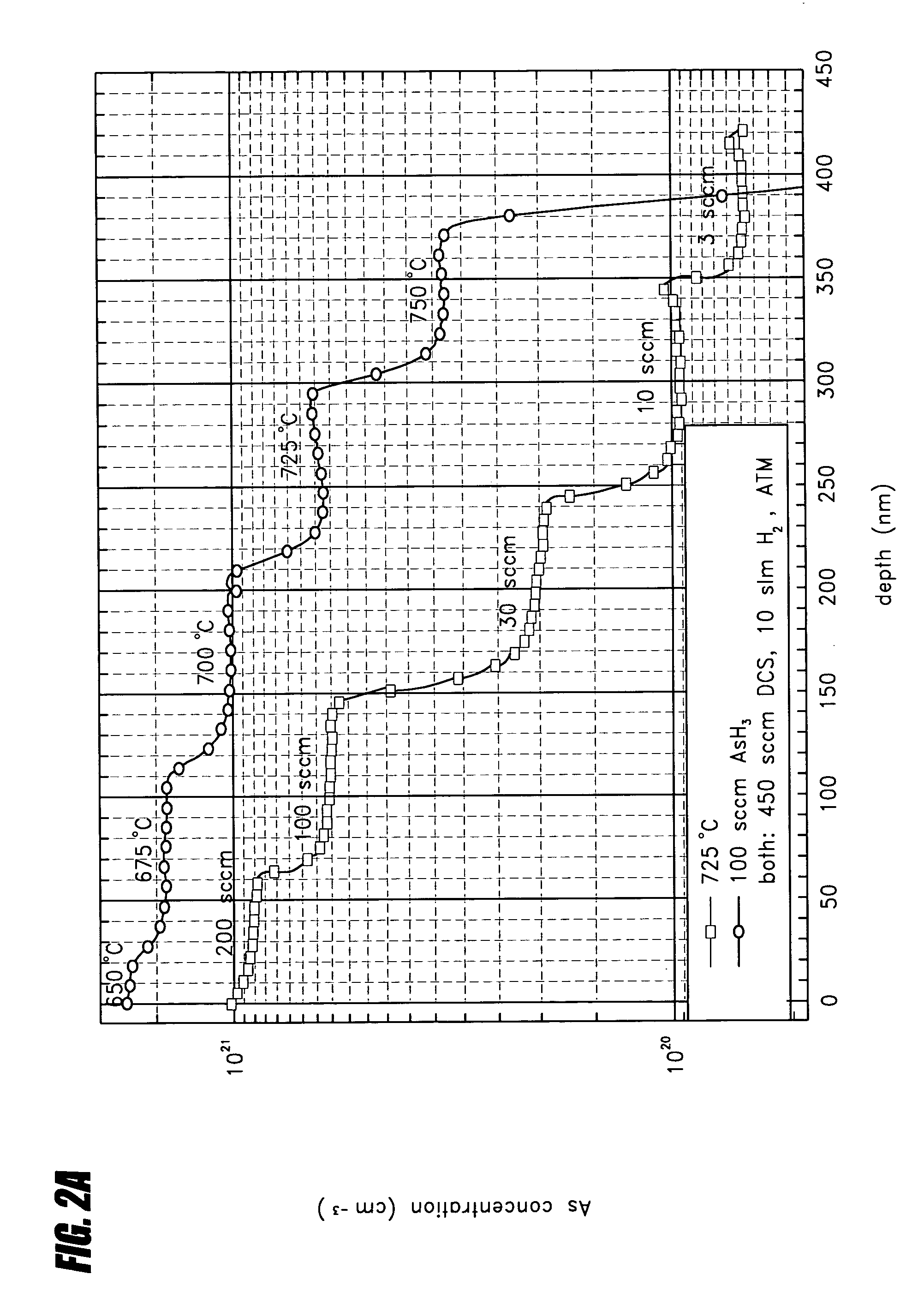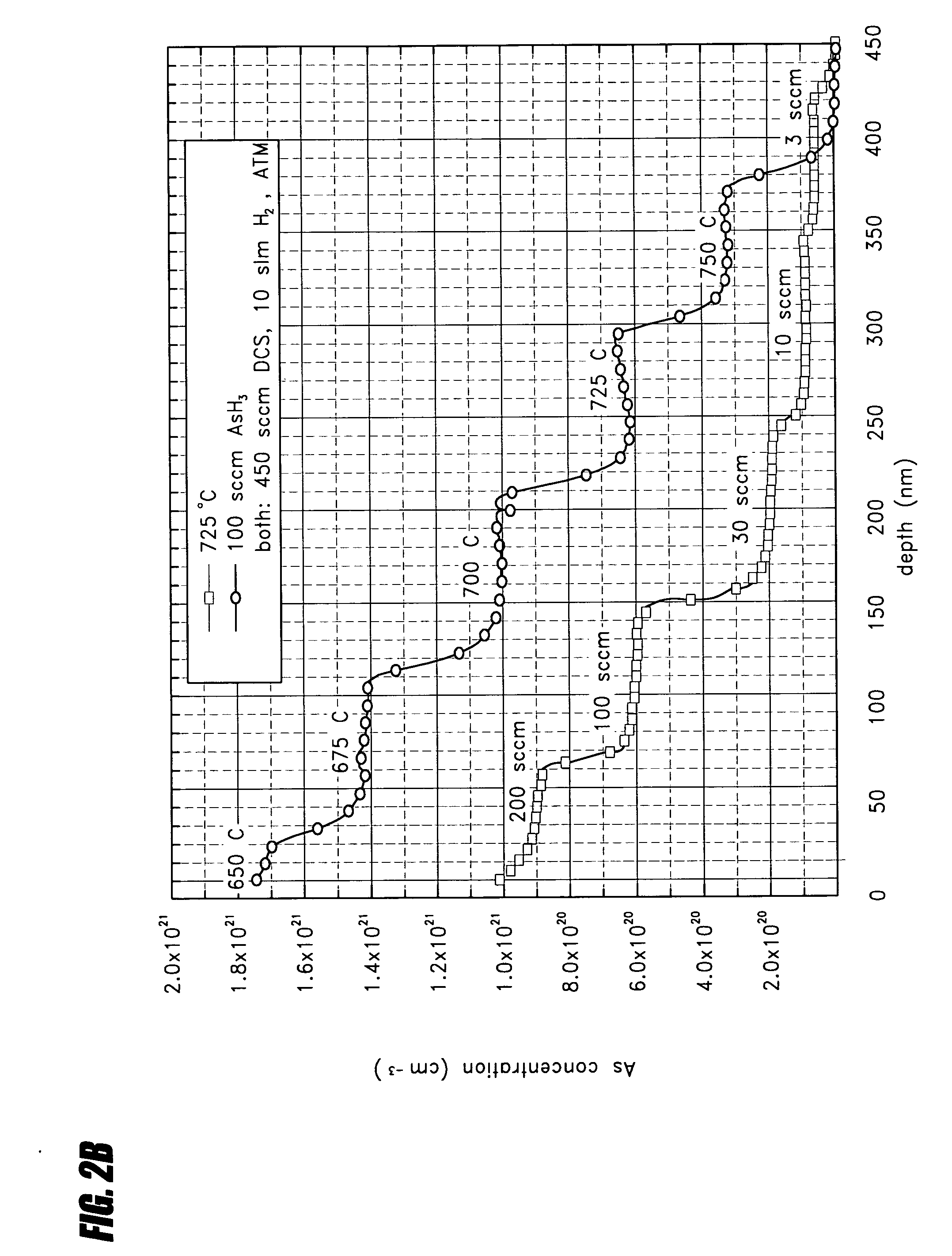In situ doped epitaxial films
a doped epitaxial and film technology, applied in the direction of crystal growth process, polycrystalline material growth, chemically reactive gas, etc., can solve the problems of omitting photolithography and etch steps, reducing deposition rate, and slow deposition rate, so as to reduce deposition rate, slow deposition rate, the effect of slow deposition ra
- Summary
- Abstract
- Description
- Claims
- Application Information
AI Technical Summary
Benefits of technology
Problems solved by technology
Method used
Image
Examples
Embodiment Construction
[0023] Disclosed herein are exemplary embodiments of improved methods for performing selective epitaxial deposition of semiconductor materials, including in situ doped semiconductor materials. Exemplary semiconductor materials that are deposited using certain of the embodiments disclosed herein include silicon films and silicon germanium films. Certain of the chemical vapor deposition (“CVD”) techniques disclosed herein produce semiconductor films with improved crystal quality, improved electrical activation of incorporated dopants, and increased growth rate. In certain embodiments, highly doped selective deposition is possible under atmospheric conditions using dichlorosilane (“DCS”) as a silicon precursor, dopant hydrides, and optionally, HCl to improve selectivity. Germanium and / or carbon precursors, such as germane or methylsilane, are optionally added to the process gas mixture to form films that include germanium and / or carbon.
[0024] Deposition at pressures above the LPCVD an...
PUM
 Login to View More
Login to View More Abstract
Description
Claims
Application Information
 Login to View More
Login to View More - R&D
- Intellectual Property
- Life Sciences
- Materials
- Tech Scout
- Unparalleled Data Quality
- Higher Quality Content
- 60% Fewer Hallucinations
Browse by: Latest US Patents, China's latest patents, Technical Efficacy Thesaurus, Application Domain, Technology Topic, Popular Technical Reports.
© 2025 PatSnap. All rights reserved.Legal|Privacy policy|Modern Slavery Act Transparency Statement|Sitemap|About US| Contact US: help@patsnap.com



